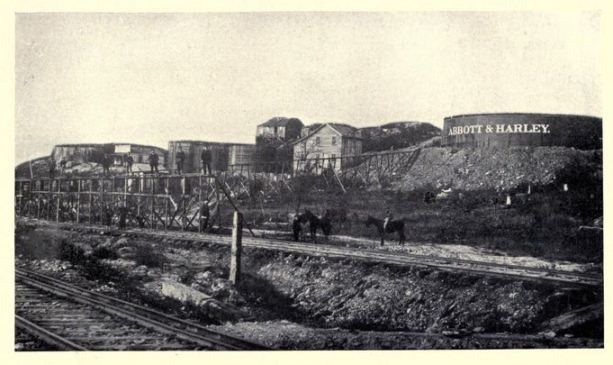William Hawkins Abbott was a 19th-century pioneer in the energy industry. Originally a farmer and merchant from Connecticut, Abbott found his fortune in the oil fields of western Pennsylvania and helped transform the market for affordable energy through his oil refining, pipeline, and distribution networks.
Born in Middlebury, Connecticut, in 1819, William Hawkins Abbott was the oldest of 12 children born into a farming family. Throughout much of his childhood, Abbott attended school during the winter months and spent the remainder of the year farming.
At the age of 18, Abbott became a salesman and clerk for a merchant in Watertown. After 7 years there, he headed to Ohio, finding similar work in the town of Newton Falls. One year into his new position he replaced one of his bosses as part owner of a store renamed Bronson & Abbott. Soon, however, Abbott went out on his own and made a living both as a merchant and by opening his own real estate business.
Abbott Refines His Business Acumen in the Oil Fields of Pennsylvania
In February of 1860, Abbott visited the oil region of western Pennsylvania and immediately recognized the industry’s financial potential. Abbott bought an interest in one of the drilling leases there and by the time he arrived back in Ohio his well was producing upwards of 50 barrels of oil per day. He promptly made his way to New York to help locate buyers for this new windfall.
Abbott’s first shipments to New York arrived in oil barrels, as well as molasses and whiskey barrels, all of which leaked excessively along the journey, but still, this did not keep him from making a substantial profit. Abbott located a refinery in New York that made his oil suitable for household use (primarily in illumination) and, after acquiring a sufficient supply of barrels, he began shipping his product by rail for $1.56 per barrel.

Pipe-line at Miller farm in 1866, W. H. Abbott (depicted on the left) and Henry Harley, illustration from Sketches in Crude-Oil by John J. McLaurin
In the fall of 1860, Abbott financed the construction of a refinery, and just over 2 months later, he began refining his own oil in Titusville, Pennsylvania. The refinery cost $15,000 and Abbott’s first attempts at refining oil cost him $10 per barrel, but by the spring of 1861 he managed to streamline his processes in order to get his costs down to $1.25 per barrel.
The following year Abbott moved from Ohio to Titusville and arranged for a shipment of coal to his new hometown which he promptly sold in lots ranging from 50 to 200 pounds. It was the first coal made available for domestic use in Titusville and proved such a successful operation that Abbott began purchasing large tracts of land in Pennsylvania for coal mining.
One of Abbott’s most significant contributions to the growth of the energy industry in the Northeast came in the summer of 1867 when he formed a partnership to construct an intricate array of pipelines running from his oil fields to a series of railroad terminals. He later invested in improvements to the local railroad infrastructure that helped lower the costs of his valuable fuel supplies.
Abbott spent the later years of his life watching over his business interests and serving the town of Titusville. He even became president of the Citizens Bank of Titusville before passing away in 1901.









